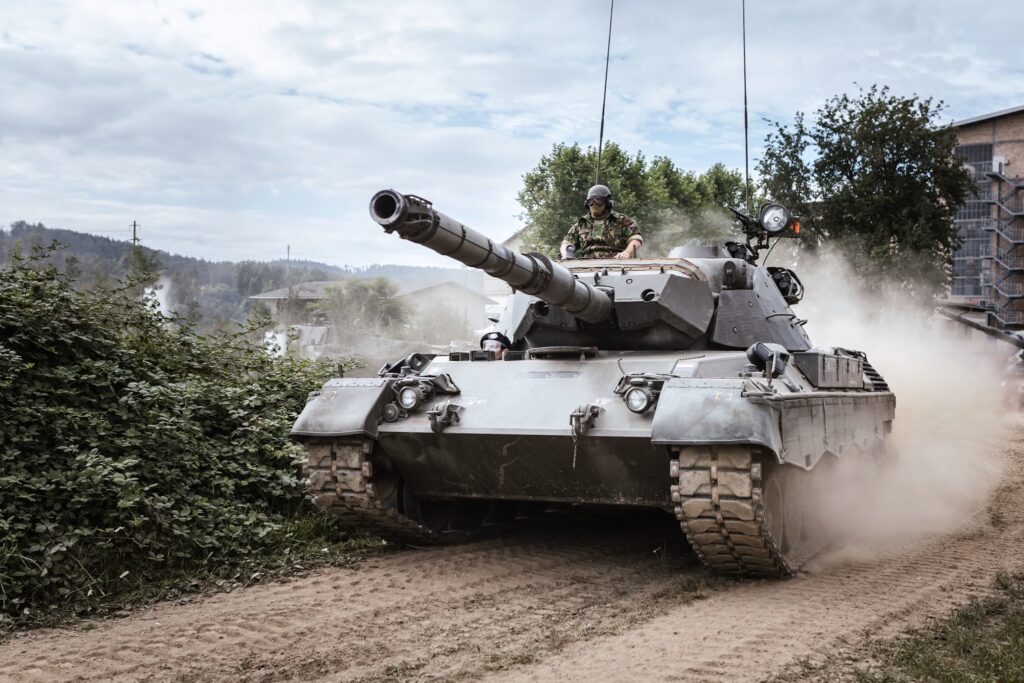
Armored vehicles had never been withdrawn from the battlefield. But experts were beginning to question their effectiveness. With Russia’s full-scale invasion of Ukraine, the place of armored vehicles has come to be reconsidered. Experts must bring armored warfare back to the agenda. Doesn’t the dozens of tanks rolling along a road on our screens remind us of images from the twentieth century? It’s exciting, true. But the realities on the ground have rekindled long-standing debates. They have taught harsh lessons about the modern tank’s capabilities and weaknesses on the battlefield. Especially in Russia. Tanks are still indispensable, but how they will adapt to evolving threats is the most difficult question of our time. In our article we examine the effects of tanks in the Ukraine war.
The Persistent Value of Armor
Despite the armour’s difficulties, tanks have proven their enduring value on the Ukrainian battlefield time and again. Their combination of protected mobility and heavy firepower is vital for both offensive and defensive operations. There are many examples in Ukraine where T-72s have overwhelmed enemy positions in attacks led by them, allowing the infantry to advance with ease. We have seen images of infantrymen cornered by Russian forces in Ukraine. We have also seen how a tank roaring in the middle of this inferno saved the lives of those soldiers. Anti-tank weapons can eliminate them at no cost. But there are not as many anti-tank guns on the battlefield as cigarettes. We have seen in Ukraine that tanks can change the direction of enemy attacks simply by their presence.
Modern Threats in the Ukraine War
But the Ukraine war has brought the lethality of modern anti-tank weapons to our attention. Widely used Anti-Tank Guided Missiles (ATGMs) such as the FGM-148 Javelin, NLAW and the indigenous Stugna-P have inflicted significant losses on even advanced MBTs such as the T-90M. These weapons, usually issued to small, mobile and professional infantry teams, have led to many deaths by exploiting weaknesses, particularly the traditionally thinner upper armour. The visceral images of jack-in-the-box explosions, where the ammunition detonates and blows away the turret, have become grimly iconic, showing the disastrous consequences for the crew trapped inside.
Anti-tank weapons are not the only threat to tanks. Light infantry are not enough. Unmanned aerial vehicles are the biggest threat to tanks. From advanced armed drones like the Bayraktar TB2 that launch guided munitions, to cheaper reconnaissance drones that detect targets for artillery, to simple FPV (First Person View) drones adapted to drop grenades or act as loitering munitions, death rains down from the sky for tank crews. To ward off these threats, tanks need constant aerial surveillance. Tanks that move more cautiously are forced to slow down. The crews’ psychology is devastated when they feel vulnerable. It is easy to cope with the fear of the visible enemy. The constant fear of an unseen missile or the sound of a drone suddenly appearing overhead is a heavy burden.
Tanks in the Ukraine War: Tactical Adaptation and Combined Arms
Survival and effectiveness in this environment demand tactical evolution. Both Ukrainian and Russian forces have adapted, moving away from unsupported tank charges. Armies began to pay more attention to dispersion, camouflage, and the use of terrain as cover. Tanks in the Ukraine War are often employed more cautiously, sometimes providing overwatch or indirect fire support from safer distances. Crucially, the war has reinforced the absolute necessity of combined arms operations. Tanks operating without adequate infantry support to screen for ATGM teams, effective air defense cover against drones, and electronic warfare to counter enemy UAVs are exceptionally vulnerable. Successful operations invariably involve tanks working in tight coordination with other branches, a lesson learned at a high cost.
The Human Factor and Future Prospects
Behind the statistics of destroyed vehicles are the human stories – crews facing extreme stress, the loss of comrades, the physical and mental toll of combat operations in cramped, dangerous machines. The effectiveness of any tank ultimately depends on the skill, courage, and resilience of the soldiers operating it.
The Ukraine war has not signalled the end of the tank, but it has accelerated its evolution. Future designs and upgrades will undoubtedly focus on enhanced situational awareness, improved all-around protection (including advanced Explosive Reactive Armor and Active Protection Systems like Trophy or Arena), and better countermeasures against aerial threats. There’s also growing interest in integrating unmanned systems. Tanks remain a vital component of ground combat power, but Ukraine serves as a harsh proving ground, dictating that they must become more survivable, adaptable, and integrated to remain decisive on the battlefields of tomorrow.
I will be writing more articles on the use of new technologies in modern warfare. Stay tuned.





